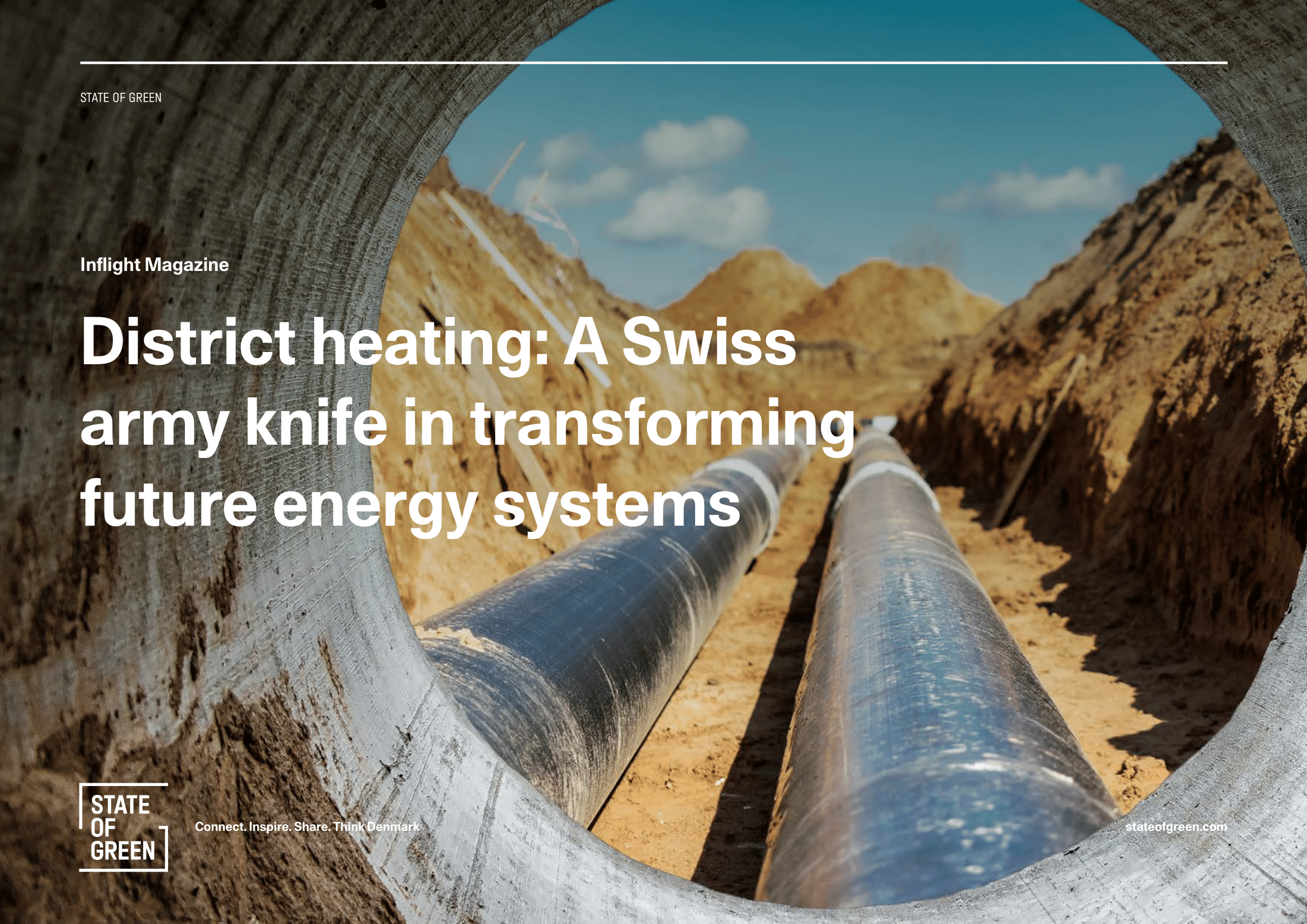
Foreword by
Finn Mortensen
Executive Director
Publication
District heating
Biogas
District cooling
+13

Denmark is embarking on a transformation of its energy system, charting a course towards a low-carbon future. This transition is underpinned by a steadfast commitment to resource efficiency, with a particular emphasis on optimising energy consumption in buildings, industry, and transportation.
To push the needle, Denmark regards the role of public-private partnerships as a key in driving innovation and investment in the energy sector. These partnerships serve as the linchpin of the Danish transition strategy, fostering collaboration between governmental entities, private enterprises, and research institutions. By harnessing the expertise and resources of both the public and private sectors, Denmark can accelerate the development and implementation of cutting-edge technologies and practices.
While early initiatives focused on implementing solutions at home, Denmark’s approach to energy transition transcends its borders. International collaborations is instrumental and crucial in building an integrated and resilient energy network. By working together, it is possible to continuously co-create a regional energy ecosystem that maximises the potential of fluctuating renewable sources like wind and solar while utilising surplus energy and heat from various sources and exploring innovative approaches, such as green hydrogen. To the benefit of both societies, the partnership entails the exchange of knowledge, expertise, and best practices in areas such as renewable energy production, grid management, and energy storage solutions.
District energy systems in particular play a pivotal role, as they tie together various elements of the future’s energy mix by integrating electricity, heat, cooling, transport, and renewable fuel production. These district energy systems are becoming increasingly data-driven, thanks to the active involvement of district energy companies across the value chain. By harnessing data and employing advanced analytics, these companies optimise their operations, enhance energy efficiency, and contribute to the overall journey of Denmark’s energy transition.
Examining what’s in store for future district heating systems, I hope this catalogue will provide Danish insights and serve as an inspiration to follow.
This publication is funded by the European Union.
